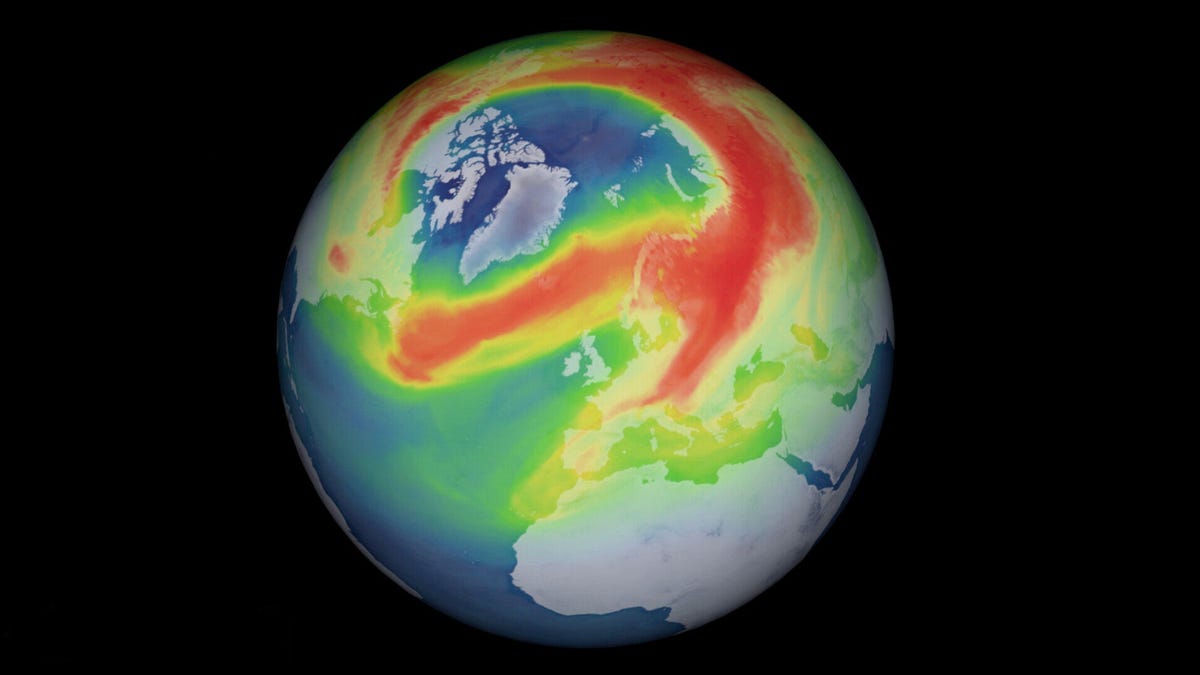Mini ozone hole opens over Arctic and, yes, that's kinda weird
Antarctica is home to our usual hole in the ozone layer. This year, the Arctic is getting in on the action.
There's a new hole in the ozone layer, and it's not where you would expect it to be.
Scientists have monitored the infamous ozone hole in Antarctica since the 1980s, but a mini hole opened up on the other side of the planet in the Arctic this year. The European Space Agency announced the discovery on Monday.
NASA has likened the ozone layer to atmospheric sunscreen. It protects Earth from the sun's ultraviolet radiation and helps keep our planet habitable for life. The emergence of the Antarctica hole sparked a global effort to reduce the use of chemicals, including some aerosol products, that contribute to the hole.
German Aerospace Center (DLR) researchers watched the Arctic hole's formation by using data from the Copernicus Sentinel-5P satellite. The Antarctica hole forms seasonally, but Arctic holes, particularly of this size, are a rare occurrence.
ESA said "unusual atmospheric conditions" are to blame, including freezing temperatures in the stratosphere, an extremely strong polar vortex (a swirling expanse of cold air) and the arrival of post-winter sunlight.
The Arctic hole is still a fraction of the size of the Antarctica one. The researchers expect it will close up again by mid-April.
Scientists announced last fall that the 2019 ozone hole in Antarctica was the smallest on record, but cautioned that it wasn't a sign of a quick fix. In 2018, NASA revealed the first direct proof of ozone-hole recovery due to a ban on chemicals, but it will still take decades for the ozone layer to recuperate.


